Heating Temperature Prediction of Concrete Structure Damaged by Fire Using a Bayesian Approach
Abstract
1. Introduction
2. Literature Review
3. Bayesian Parameter Estimation
4. Proposed Model
5. Application
6. Conclusions
- This study used the Bayesian parameter estimation method and developed a method to statistically estimate the heating temperature by including a term represented as the ratio of the concrete compressive strength and the residual strength. The accuracy of this method was estimated as the c.o.v. of 13%, which showed significant improvement from the recent Kang et al.’s machine-learning based model.
- The residual concrete compressive strength is usually measured as a rebound strength using a Schmidt hammer, but after fire damage, this can be difficult to apply to an uneven spalled concrete surface. For this situation, this study proposed an alternative way to estimate the residual concrete compressive strength using ultrasonic pulse velocity, and the developed model with the use of ultrasonic pulse velocity had the estimation c.o.v. of 23%. This method also showed better accuracy than Kang et al.’s model.
- The proposed equations, based on the Bayesian parameter estimation approach, are very practical because they provide an accurate estimation of heating temperatures by using the ultrasonic pulse velocity and residual compressive strength of concrete that can be typically obtained by simple measurements during safety diagnosis.
- The developed heating temperature estimation models can be used for fire inspection and the structural performance assessment of RC members damaged by fire. For example, the proposed method can replace the standard fire curve provided in the 500 °C isotherm method in Eurocode 2 by providing a more realistic heating temperature estimation.
Author Contributions
Funding
Conflicts of Interest
References
- Georgali, B.; Tsakiridis, P.E. Microstructure of fire-damaged concrete. A case study. Cem. Concr. Compos. 2005, 27, 255–259. [Google Scholar] [CrossRef]
- ISO 834-1:1999(E). Fire-Resistance Tests-Elements of Building Construction-Part 1: General Requirements; ISO: Geneva, Switzerland, 1999. [Google Scholar]
- ASTM E119, Standard Methods of Fire Tests of Building Construction and Materials; American Society for Testing and Materials: Philadelphia, PA, USA, 2000.
- EN 1992-1-2, Eurocode 2: Design of Concrete Structures, Part 1-2: General Rules-Structural Fire Design; European Committee for Standardization: Brussels, Belgium, 2004.
- Architectural Institute of Japan (AIJ). Diagnosis and Repair Methods of Fire-Damaged Buildings; Architectural Institute of Japan: Tokyo, Japan, 2004. [Google Scholar]
- Korea Concrete Institute (KCI). Fire Resistance of Reinforced Concrete Structures; Korea Concrete Institute: Seoul, Korea, 2005. [Google Scholar]
- Anderberg, Y. Analytical Fire Engineering Design of Reinforced Concrete Structures Based on Real Fire Characteristics. In Proceedings of the 8th Congress of the Federation Internationale de la Precontrainte, London, UK, 30 April–5 May 1978. [Google Scholar]
- Buchanan, A.H. Structural Design for Fire Safety; Wiley: London, UK, 2002. [Google Scholar]
- El-Fitiany, S.F.; Youssef, M.A. Assessing the flexural and axail behaviour of reinforced concrete members at elevated temperatures using sectional analysis. Fire Saf. J. 2009, 44, 691–703. [Google Scholar] [CrossRef]
- Caldas, R.B.; Sousa, J.B.M., Jr.; Fakury, R.H. Interaction diagrams for reinforced concrete sections subjected to fire. Eng. Struct. 2010, 32, 2382–2838. [Google Scholar] [CrossRef]
- Heo, I.W.; Kang, H.; Lee, D.H.; Oh, J.Y.; Lee, J.M.; Kim, K.S. Performance-based fire behaviour analysis for underground parking structures. J. Urban Sci. 2016, 20, 90–100. [Google Scholar] [CrossRef]
- Kang, H.; Cheon, N.R.; Lee, D.H.; Lee, J.M.; Kim, K.S.; Kim, H.Y. PM interaction curve for reinforced concrete columns exposed to elevated temperature. Comput. Conc. 2019, 19, 537–544. [Google Scholar] [CrossRef]
- Alqassim, M.A.; Jones, M.R.; Berlouis, L.E.A.; Nic Daeid, N. A thermoanalytical, X-ray diffraction and petrographic approach to the forensic assessment of fire affected concrete in the United Arab Emirates. Forensic Sci. Int. 2016, 264, 82–88. [Google Scholar] [CrossRef]
- Kang, H. Assessment for Fire Damaged Reinforced Concrete Structures Based on Fuzzy Theory. Ph.D. Thesis, Department of Architectural Engineering, University of Seoul, Seoul, Korea, 2018. [Google Scholar]
- Kang, H.; Cho, H.C.; Choi, S.H.; Heo, I.; Kim, H.Y.; Kim, K.S. Estimation of Heating Temperature for Fire-Damaged Concrete Structures Using Adaptive Neuro-Fuzzy Inference System. Materials 2019, 12, 3964. [Google Scholar] [CrossRef]
- Shih, Y.F.; Wang, Y.R.; Lin, K.L.; Chen, C.W. Improving non-destructive concrete strength tests using support vector machines. Materials 2015, 8, 7169–7178. [Google Scholar] [CrossRef]
- Jang, J.S.R.; Sun, C.T.; Mizutani, E. Neuro-Fuzzy and Soft Computing: A Computational Approach to Learning and Machine Intelligence; Prentice Hall: Upper Saddle River, NJ, USA, 1997. [Google Scholar]
- Gardoni, P. Probabilistic Models and Fragility Estimates for Structural Components and Systems. Ph.D. Thesis, University of California, Berkeley, CA, USA, 2002. [Google Scholar]
- Gardoni, P.; Mosalam, K.M.; Kiureghian, A.D. Probabilistic seismic demand models and fragility estimates for RC bridges. J. Earthqu. Eng. 2003, 7, 79–106. [Google Scholar] [CrossRef]
- Song, J.h.; Kang, W.H.; Kim, K.S.; Jung, S.M. Probabilistic shear strength models for reinforced concrete beams without shear reinforcement. Struct. Eng. Mech. 2010, 11, 15–38. [Google Scholar] [CrossRef]
- Box, G.E.P.; Tiao, G.C. Bayesian Inference in Statistical Analysis, Wiley Classics Library Edition; John Wiley and Sons: New York, NY, USA, 1992. [Google Scholar]
- Architectural Institute of Japan (AIJ). Manual of Nondestructive Test Methods for the Evaluation of Concrete Strength; Architectural Institute of Japan: Tokyo, Japan, 1983. [Google Scholar]
- Akashi, T. Studies on nondestructive testings of concrete. J. JSCE 1988, 390, 1–22. [Google Scholar] [CrossRef][Green Version]
- Korea Research Institute of Standards and Science. Standardization for Concrete Compressive Strength Estimation Equation by Experiment for Specimen and Wall Type Structure; Research Report; Korea Research Institute of Standards and Science: Seoul, Korea, 1999. [Google Scholar]
- Atici, U. Prediction of the strength of mineral admixture concrete using multivariable regression analysis and an artificial neural network. Expert Syst. Appli. 2001, 38, 9609–9618. [Google Scholar] [CrossRef]
- Del Rio, L.M.; Jimenes, A.; Lopez, F.; Rufo, M.M.; Paniagua, J.M. Characterization and hardening of concrete with ultrasonic testing. Ultrasonics 2004, 42, 527–530. [Google Scholar] [CrossRef] [PubMed]
- Han, M.Y.; Kim, D.W. A study on the pull-out test for non-destructive evaluation of concrete strength. Proc. Korea Concr. Inst. 1999, 11, 639–642. [Google Scholar]
- Im, S.Y. A Study on the Estimation of Compressive Strength of Concrete by Non-Destructive Test. Master’s Thesis, Daegu University, Daegu, Korea, 2007. [Google Scholar]
- Khan, M.I. Evaluation of non-destructive testing of high strength concrete incorporating supplementary cementitious composites. Resour. Conserv. Recycl. 2012, 61, 125–129. [Google Scholar] [CrossRef]
- Kim, M.W.; Oh, H.; Oh, W.C. Estimating the compressive strength of high strength concrete using surface rebound value and ultrasonic velocity. J. Korea Inst. Struct. Maint. Insp. 2016, 20, 1–9. [Google Scholar] [CrossRef][Green Version]
- Lee, H.K.; Lee, B.J.; Oh, K.C.; Kim, Y.Y. Reliability evaluation for prediction on concrete compressive strength through impact resonance method and ultra pulse velocity method. J. Korea Inst. Struct. Maint. Insp. 2016, 19, 18–24. [Google Scholar] [CrossRef][Green Version]
- Mohammed, B.S.; Najwa, J.A.; Abdullahi, M. Evaluation of rubbercrete based on ultrasonic pulse velocity and rebound hammer tests. Constr. Build. Mater. 2011, 25, 1388–1397. [Google Scholar] [CrossRef]
- Qasrawi, H.Y. Concrete strength by combined nondestructive methods Simply and reliably predicted. Cem. Concr. Res. 2000, 30, 739–746. [Google Scholar] [CrossRef]
- Trtnik, G.; Franci, K.; Goran, T. Prediction of concrete strength using ultrasonic pulse velocity and artificial neural networks. Ultrasonics 2009, 49, 53–60. [Google Scholar] [CrossRef] [PubMed]
- Won, J.P.; Park, S.K.; Ahn, T.S. A study on the concrete strength prediction by ultrasonic pulse velocity method. Proc. Korea Soc. Civil. Eng. 2000, 1, 391–394. [Google Scholar]
- Kim, M.H.; Choi, S.J.; Kang, S.P.; Kim, J.H.; Jang, J.H. A study on the application of non-destructive testing equation for the estimation of compressive strength of high strength concrete. J. Korea Inst. Build. Constr. 2002, 2, 123–130. [Google Scholar] [CrossRef]
- Purkiss, J.A. Fire Safety Engineering: Design of Structures, 2nd ed.; Elsevier: Amsterdam, The Netherlands, 2007. [Google Scholar]
- Wickström, U. A very Simple Method for Estimating Temperatures in Fire Exposed Structures; Technical Report SP RAPP 1986:46; Swedish National Testing and Research Institute: Boras, Sweden, 1986. [Google Scholar]
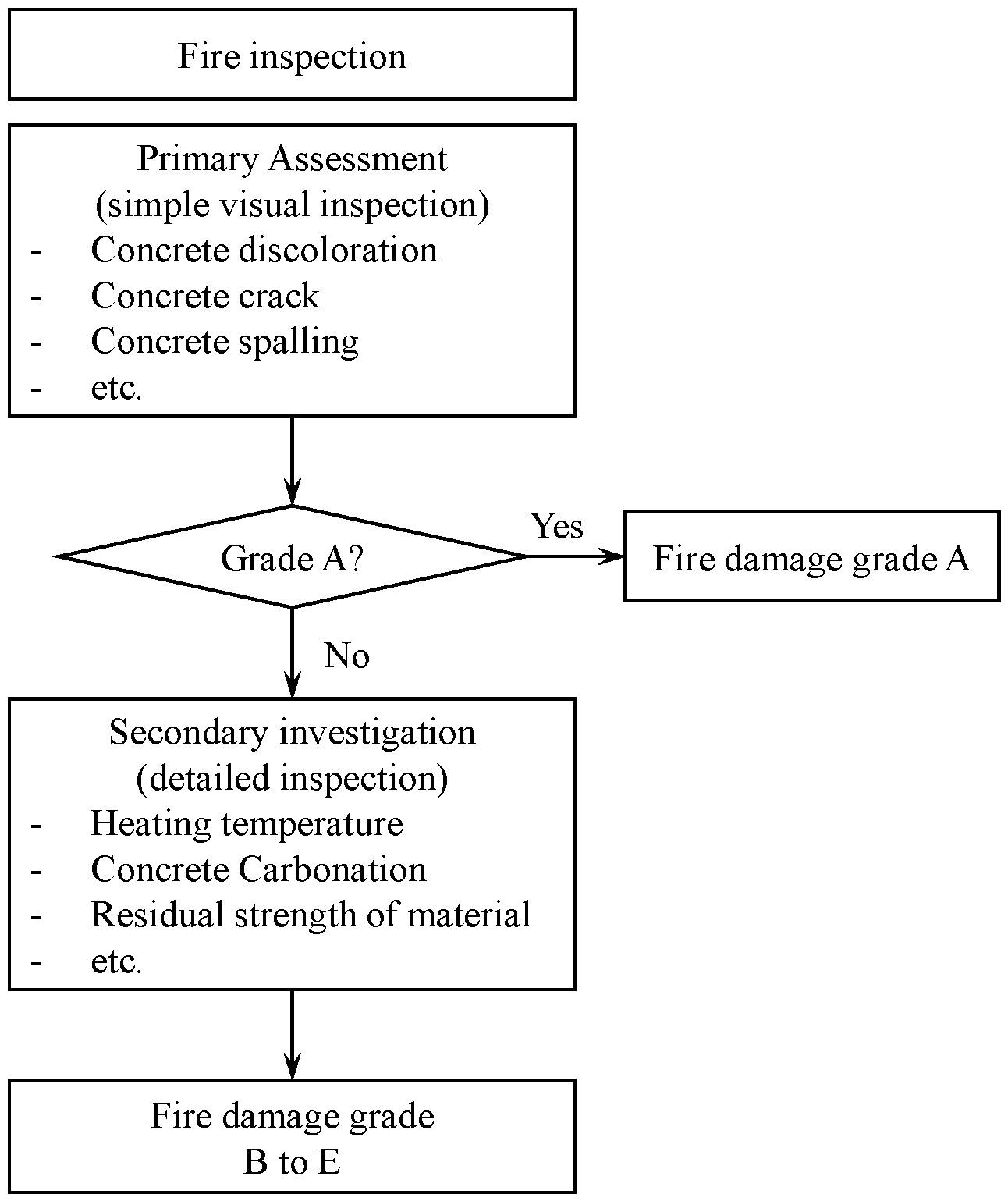
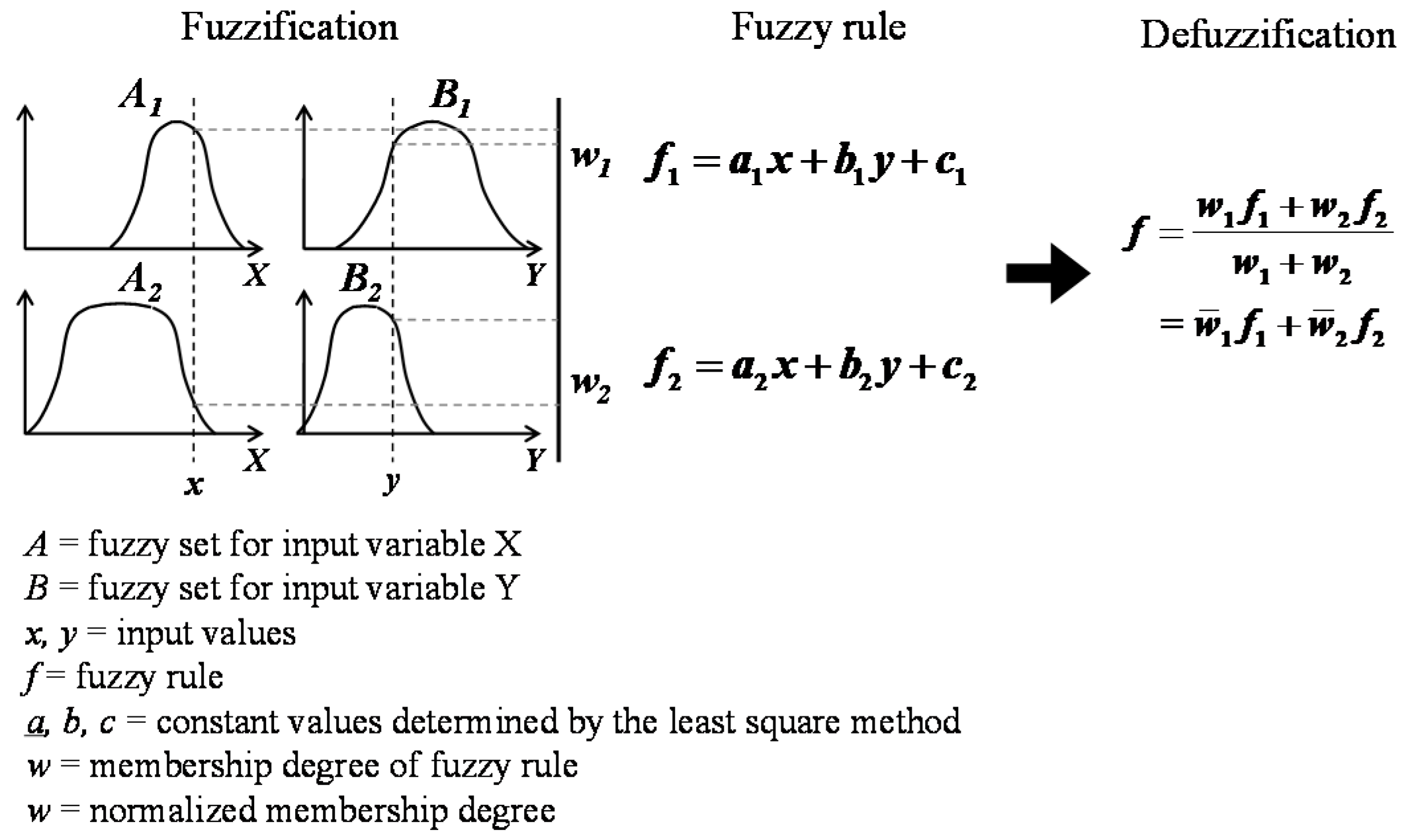
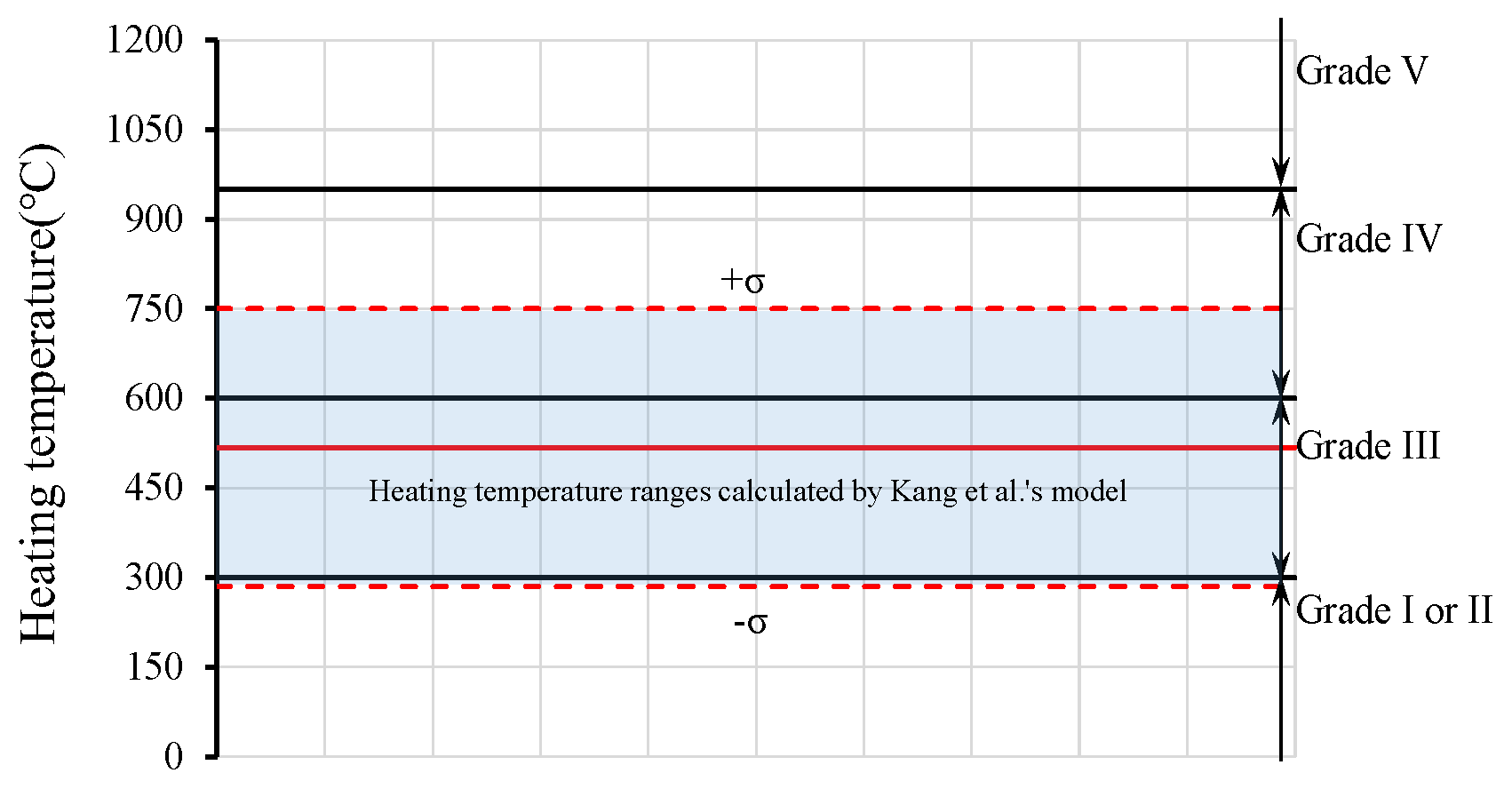
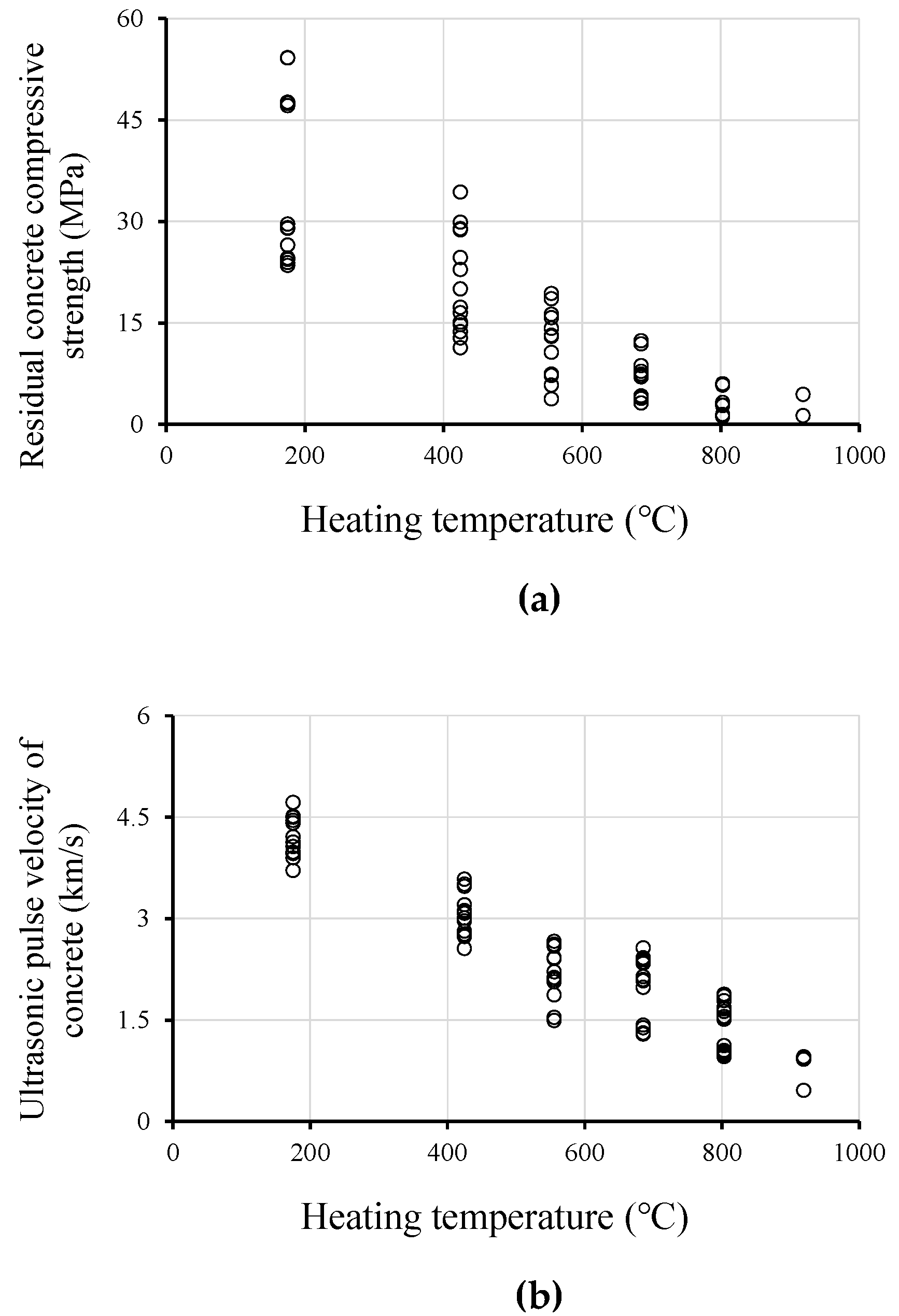
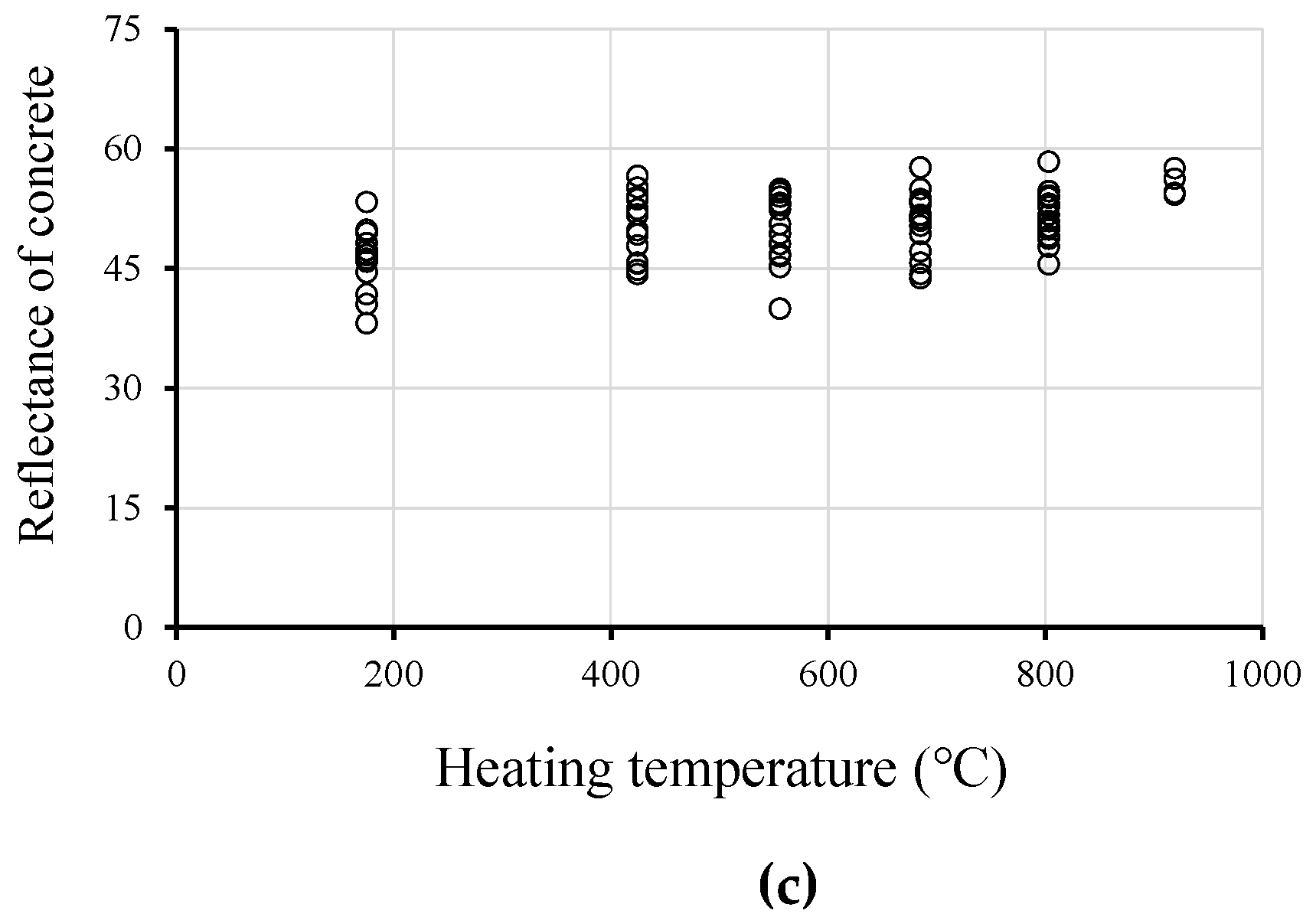

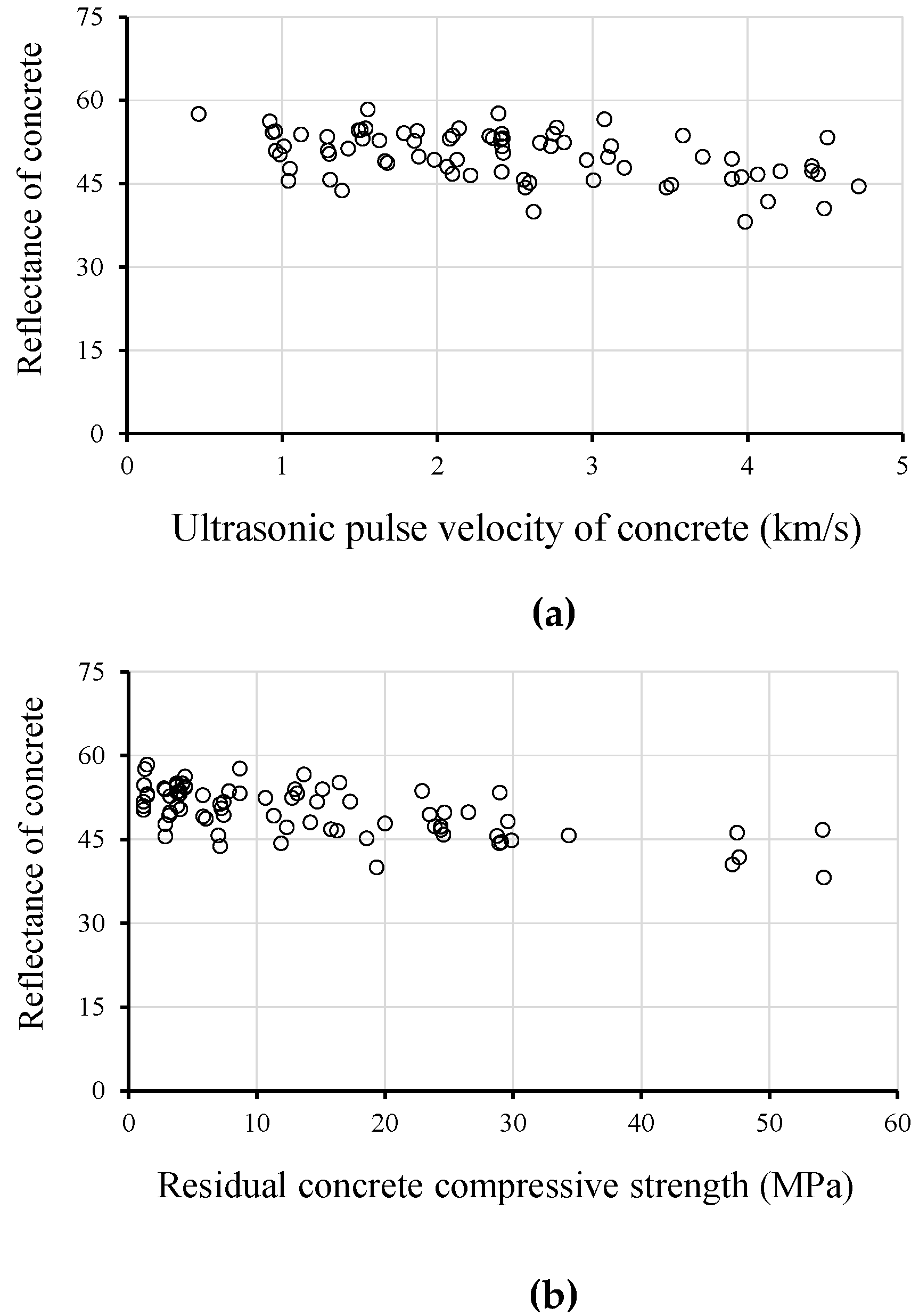
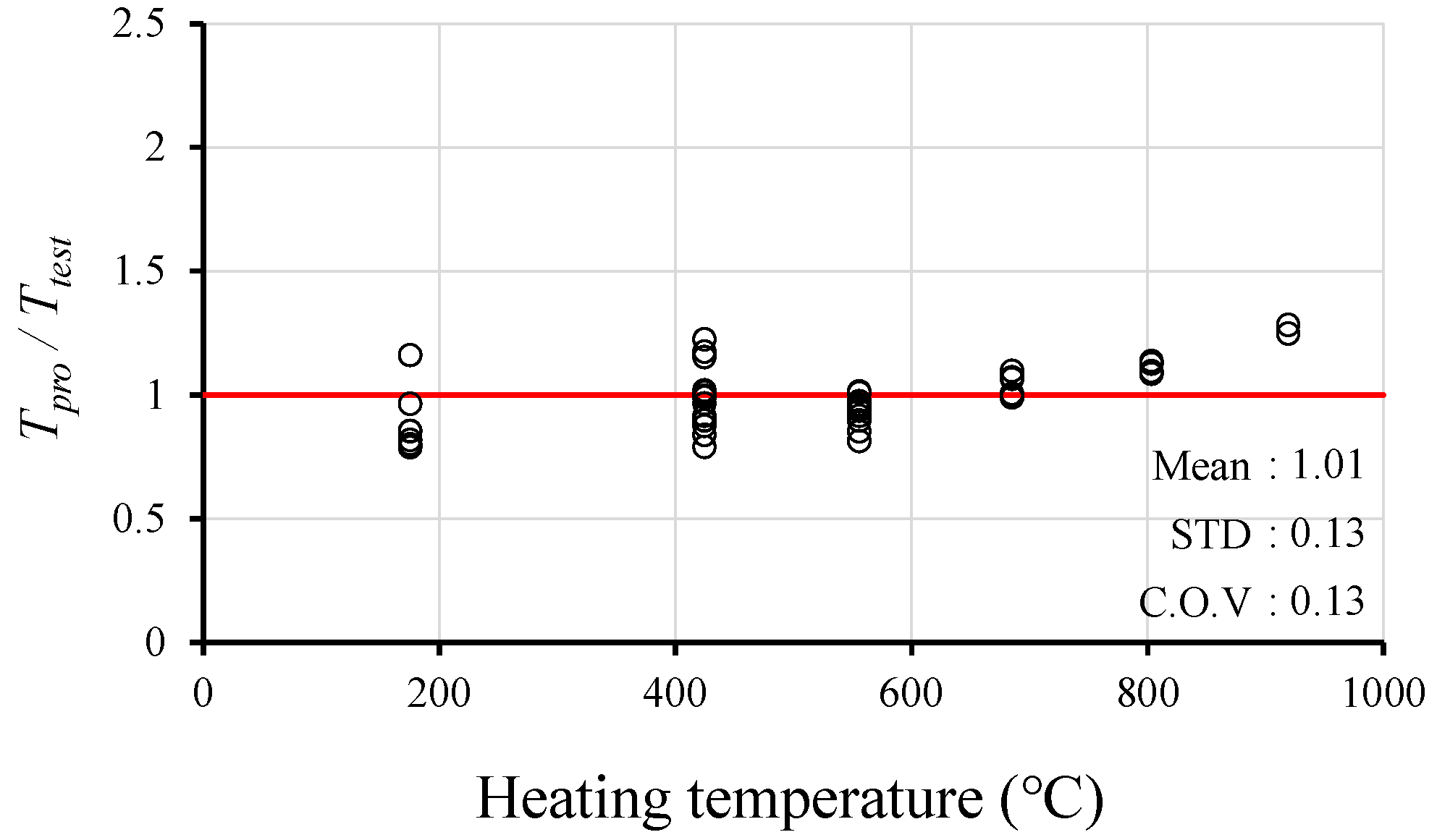
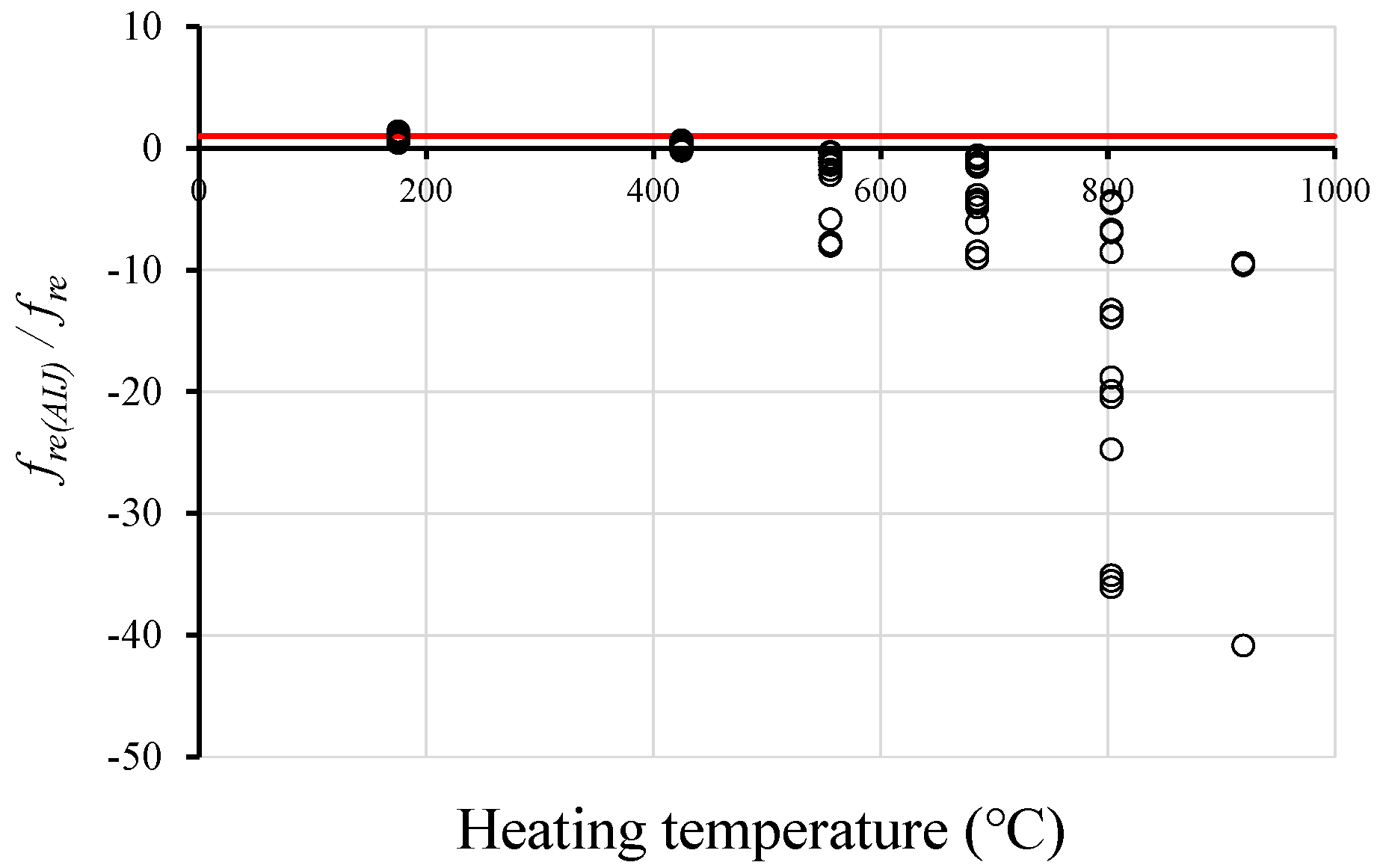
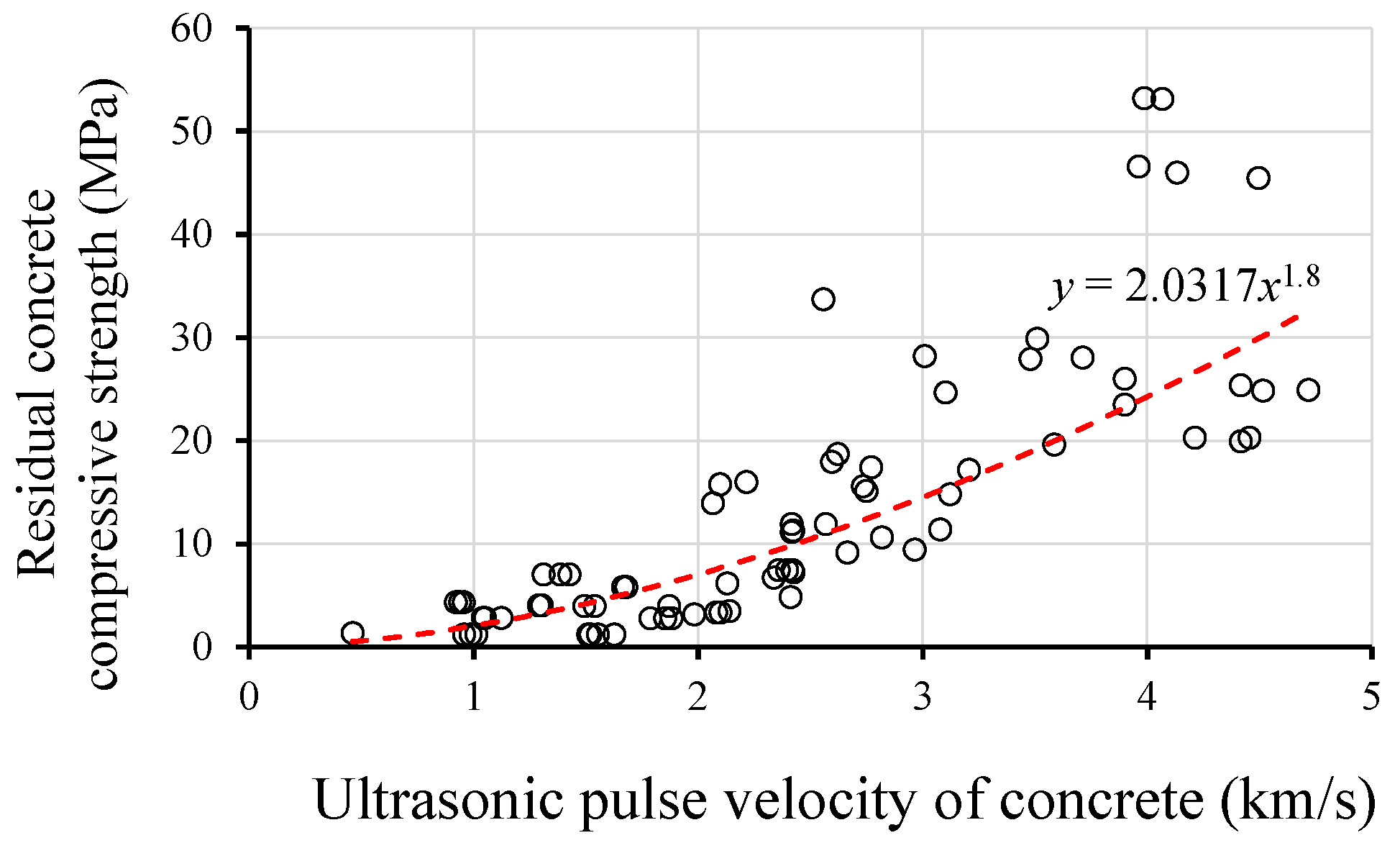

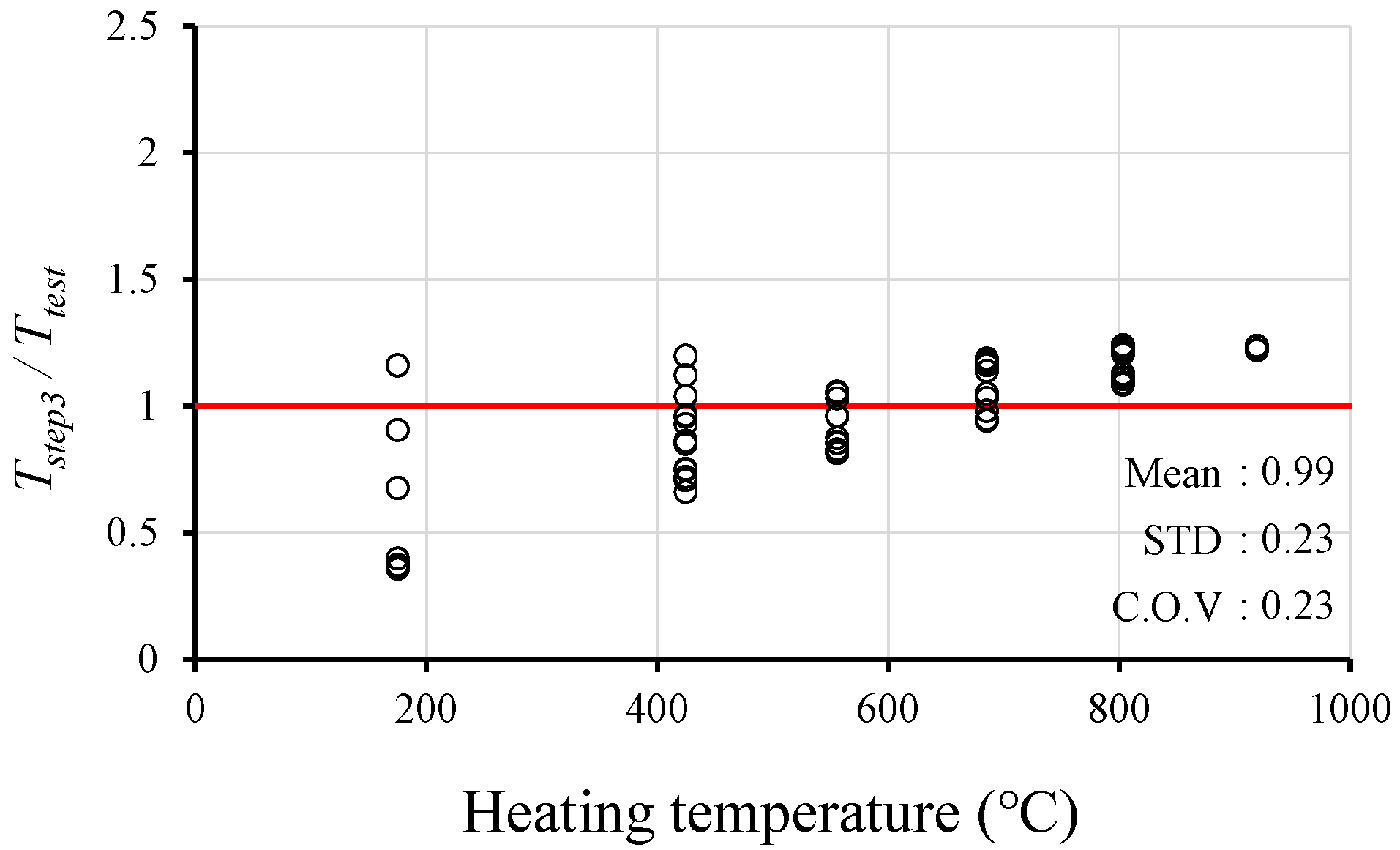
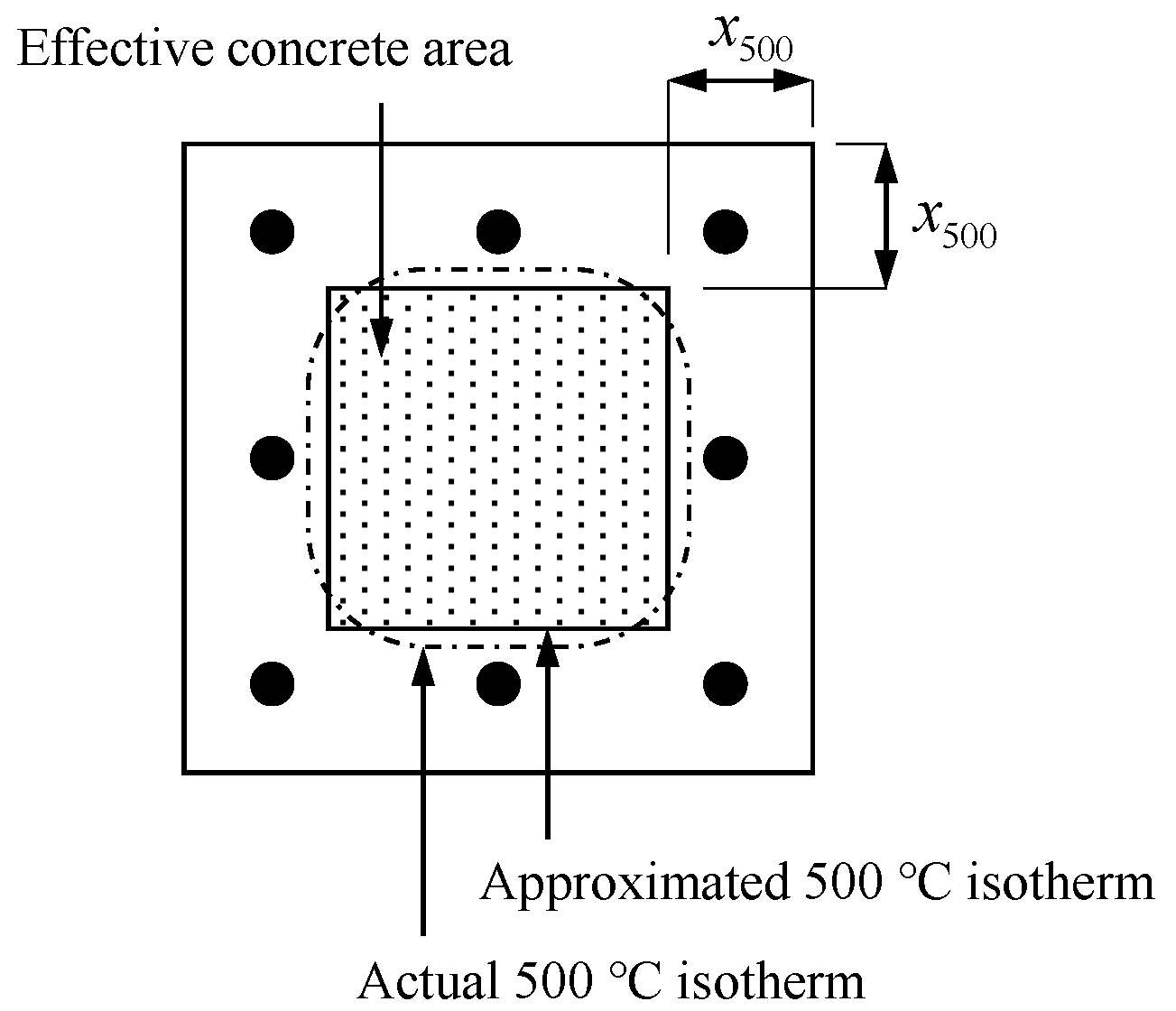
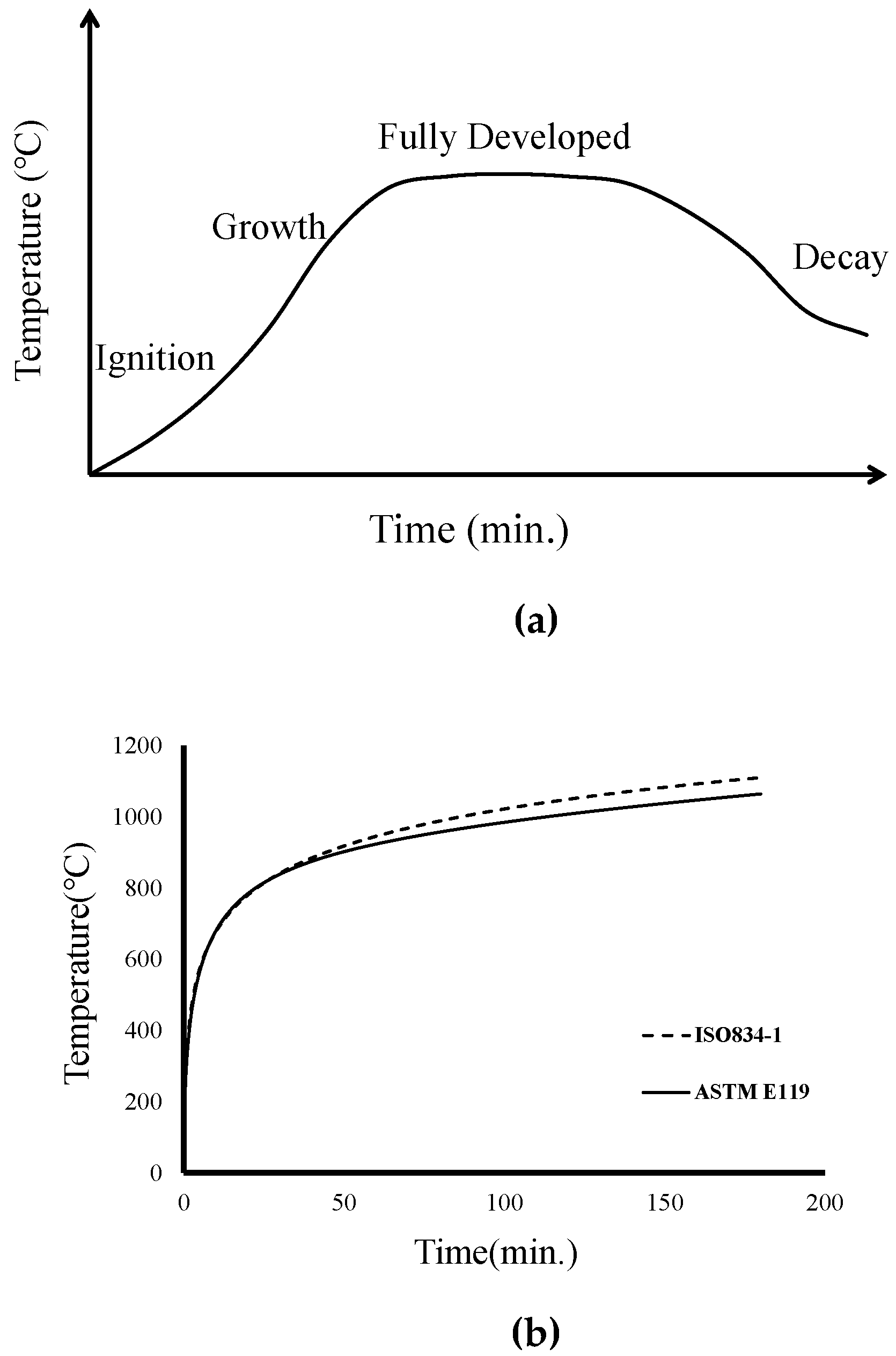
| Temperature (°C) | Strength Reduction Factor |
|---|---|
| 20 | 1.00 |
| 100 | 1.00 |
| 200 | 0.95 |
| 300 | 0.85 |
| 400 | 0.75 |
| 500 | 0.60 |
| 600 | 0.45 |
| 700 | 0.30 |
| 800 | 0.15 |
| 900 | 0.08 |
| 1000 | 0.04 |
| 1100 | 0.01 |
| 1200 | 0.00 |
| No. | f′c | f′c/fre | vp | R | No. | f′c | f′c/fre | vp | R |
|---|---|---|---|---|---|---|---|---|---|
| 1 | 24 | 0.83 | 4.42 | 47.32 | 40 | 30 | 0.09 | 1.88 | 49.85 |
| 2 | 24 | 0.85 | 4.21 | 47.27 | 41 | 30 | 0.09 | 1.85 | 52.72 |
| 3 | 24 | 0.85 | 4.45 | 46.72 | 42 | 50 | 0.93 | 3.96 | 46.19 |
| 4 | 24 | 0.47 | 3.08 | 56.61 | 43 | 50 | 1.06 | 3.98 | 38.16 |
| 5 | 24 | 0.44 | 2.82 | 52.42 | 44 | 50 | 1.06 | 4.07 | 46.7 |
| 6 | 24 | 0.39 | 2.96 | 49.23 | 45 | 50 | 0.67 | 2.56 | 45.71 |
| 7 | 24 | 0.20 | 2.41 | 52.91 | 46 | 50 | 0.56 | 3.01 | 45.61 |
| 8 | 24 | 0.26 | 2.13 | 49.35 | 47 | 50 | 0.32 | 2.21 | 46.51 |
| 9 | 24 | 0.15 | 2.14 | 54.97 | 48 | 50 | 0.28 | 2.06 | 48.04 |
| 10 | 24 | 0.14 | 2.10 | 53.66 | 49 | 50 | 0.14 | 1.39 | 43.77 |
| 11 | 24 | 0.14 | 2.08 | 53.11 | 50 | 50 | 0.14 | 1.43 | 51.32 |
| 12 | 24 | 0.05 | 1.63 | 52.8 | 51 | 50 | 0.06 | 1.05 | 47.71 |
| 13 | 24 | 0.05 | 1.55 | 58.38 | 52 | 50 | 0.06 | 1.12 | 53.86 |
| 14 | 24 | 0.05 | 1.52 | 53.1 | 53 | 50 | 0.06 | 1.04 | 45.54 |
| 15 | 27 | 0.96 | 3.90 | 45.83 | 54 | 50 | 0.09 | 0.92 | 56.25 |
| 16 | 27 | 1.04 | 3.71 | 49.83 | 55 | 50 | 0.09 | 0.94 | 54.25 |
| 17 | 27 | 0.58 | 2.73 | 51.74 | 56 | 50 | 0.09 | 0.96 | 54.46 |
| 18 | 27 | 0.65 | 2.77 | 55.14 | 57 | 55 | 0.83 | 4.49 | 40.52 |
| 19 | 27 | 0.15 | 1.87 | 54.51 | 58 | 55 | 0.84 | 4.13 | 41.77 |
| 20 | 27 | 0.15 | 1.54 | 54.96 | 59 | 55 | 0.51 | 3.48 | 44.28 |
| 21 | 27 | 0.15 | 1.49 | 54.64 | 60 | 55 | 0.33 | 2.59 | 45.18 |
| 22 | 27 | 0.15 | 1.29 | 50.99 | 61 | 55 | 0.34 | 2.62 | 39.97 |
| 23 | 27 | 0.15 | 1.29 | 53.44 | 62 | 55 | 0.22 | 2.42 | 47.14 |
| 24 | 27 | 0.05 | 1.01 | 51.72 | 63 | 55 | 0.11 | 1.68 | 48.7 |
| 25 | 27 | 0.05 | 0.99 | 50.26 | 64 | 24 | 0.30 | 2.42 | 50.52 |
| 26 | 27 | 0.05 | 0.96 | 50.95 | 65 | 24 | 0.13 | 1.98 | 49.3 |
| 27 | 27 | 0.05 | 0.46 | 57.55 | 66 | 24 | 0.05 | 1.51 | 54.71 |
| 28 | 30 | 0.83 | 4.72 | 44.52 | 67 | 27 | 0.87 | 3.90 | 49.45 |
| 29 | 30 | 0.83 | 4.51 | 53.33 | 68 | 27 | 0.56 | 2.75 | 53.96 |
| 30 | 30 | 0.85 | 4.42 | 48.18 | 69 | 27 | 0.15 | 1.30 | 50.36 |
| 31 | 30 | 0.65 | 3.58 | 53.67 | 70 | 30 | 0.25 | 2.42 | 51.73 |
| 32 | 30 | 0.57 | 3.21 | 47.87 | 71 | 30 | 0.09 | 1.79 | 54.12 |
| 33 | 30 | 0.49 | 3.12 | 51.76 | 72 | 50 | 0.49 | 3.10 | 49.77 |
| 34 | 30 | 0.38 | 2.42 | 53.2 | 73 | 50 | 0.32 | 2.10 | 46.78 |
| 35 | 30 | 0.37 | 2.42 | 53.96 | 74 | 50 | 0.14 | 1.31 | 45.71 |
| 36 | 30 | 0.30 | 2.66 | 52.41 | 75 | 55 | 0.54 | 3.51 | 44.83 |
| 37 | 30 | 0.22 | 2.34 | 53.6 | 76 | 55 | 0.22 | 2.57 | 44.28 |
| 38 | 30 | 0.25 | 2.40 | 57.65 | 77 | 55 | 0.11 | 1.66 | 49.09 |
| 39 | 30 | 0.25 | 2.36 | 53.2 |
| Temperature (°C) | Damage Level | Grade |
|---|---|---|
| T < 300 | No damage | I |
| Finishing material damage (soot, surface exfoliation) | II | |
| 300 ≤ T < 600 | Concrete damage without steel damage (small cracks in concrete or spalling) | III |
| 600 ≤ T < 950 | Bond damage of steel bars (large cracks in concrete or exposure of steel bars) | IV |
| 950 ≤ T < 1200 | Damage or buckling of steel bars (large damage or deformation of structural members, heavy exposure of steel bars in wide area) | V |
| 1200 ≤ T | Concrete melting |
| Power Terms | Mean Values | C.o.v. |
|---|---|---|
| ϴ1 | 4.34 | 0.36 |
| ϴ2 | 0.14 | 0.47 |
| ϴ3 | 0.54 | 0.22 |
| ϴ4 | 1.01 | 1.13 |
| Proposer | Compressive Strength Equation (MPa) |
|---|---|
| AIJ [22] | |
| Materials Research Society of Japan [23] | |
| KRISS [24] | |
| Atici [25] | |
| Del Rio [26] | |
| Han and Kim [27] | |
| Im [28] | |
| Khan [29] | |
| Kim et al. [30] | |
| Lee et al. [31] | |
| Mohammed et al. [32] | |
| Qasrawi [33] | |
| Trtnik et al. [34] | |
| Won et al. [35] | |
| Kim et al. [36] |
| Temperature Rage at Steel Bar | Reduction Coefficient |
|---|---|
| 20 °C ≤ Ts ≤ 100 °C | |
| 100 °C < Ts ≤ 400 °C | |
| 400 °C < Ts ≤ 500 °C | |
| 500 °C < Ts ≤ 700 °C | |
| 700 °C < Ts ≤ 1200 °C |
© 2020 by the authors. Licensee MDPI, Basel, Switzerland. This article is an open access article distributed under the terms and conditions of the Creative Commons Attribution (CC BY) license (http://creativecommons.org/licenses/by/4.0/).
Share and Cite
Cho, H.-C.; Han, S.-J.; Heo, I.; Kang, H.; Kang, W.-H.; Kim, K.S. Heating Temperature Prediction of Concrete Structure Damaged by Fire Using a Bayesian Approach. Sustainability 2020, 12, 4225. https://doi.org/10.3390/su12104225
Cho H-C, Han S-J, Heo I, Kang H, Kang W-H, Kim KS. Heating Temperature Prediction of Concrete Structure Damaged by Fire Using a Bayesian Approach. Sustainability. 2020; 12(10):4225. https://doi.org/10.3390/su12104225
Chicago/Turabian StyleCho, Hae-Chang, Sun-Jin Han, Inwook Heo, Hyun Kang, Won-Hee Kang, and Kang Su Kim. 2020. "Heating Temperature Prediction of Concrete Structure Damaged by Fire Using a Bayesian Approach" Sustainability 12, no. 10: 4225. https://doi.org/10.3390/su12104225
APA StyleCho, H.-C., Han, S.-J., Heo, I., Kang, H., Kang, W.-H., & Kim, K. S. (2020). Heating Temperature Prediction of Concrete Structure Damaged by Fire Using a Bayesian Approach. Sustainability, 12(10), 4225. https://doi.org/10.3390/su12104225







